QuestionI have a 2.5 gallon tank with a filter and heater. I try to keep the water at 75-80 degrees. I have a male beta and a pleco (baby). My last beta died within a week. I am on my 2nd and really want him to live and be happy! I don't know if the filter wasn't working properly, but the water at the top had a film on it. I took out the filter and 1/2 the water and put new water in. I had taken out the beta first. I left the pleco in. When I poured the new water in gently, there was debree floating all over GROSS! What should I do? What is the correct way to clean a tank? Do I need a gravel cleaner? I am going to go get salt as soon as the pet store opens. Thanks for any advice!
Pam
Answerhi pam
When your first set up a tank, your tank have to go throgh cycle which take about between 4-8 weeks to develop good bacteria to help your fish.
What is Cycling?
Cycling the tank" means that you are establishing a bacteria bed in your biological filter to remove the toxins that the fish's metabolism creates. There are right and wrong ways to do this, and several things you can do to slow this process (which you don't want to do). There are two steps to cycling, but you don't have to do anything special for either of them. First, your filter will grow a culture of bacteria that digest ammonia and turn it into Nitrite (which is more toxic than the ammonia in hard water or water with a higher pH), then your filter produces bacteria that digest Nitrite and turn it into relatively harmless Nitrate. However, Nitrate will contribute to loss of appetite and stress in your fish, as well as contributing to algae growth, so it is important to do regular small water changes to keep your tank in best condition.
How Do I Cycle MY Tank?
You should cycle your tank with a small number of fish. They should be hearty fish, and something that you will want to have in your tank in the long run
Every couple of days, do a 10%-15% water change, and after about a week, take a sample of your water to a fish store to get it tested. Most pet shops will test fresh water for a minimal fee, or even for free! If the store you got the fish from won't, check to see if there is another local store that will. At this point, your water should test with high ammonia and maybe a trace of nitrite. If it isn't, don't worry. Just give the tank time. The cycling process usually takes four to eight weeks
Cleaning Your Aquarium
When cleaning your aquarium, you should just remove part (10-15%) of the water and replace it with fresh, dechlorinated tap water (bowls and vases require larger water changes more often). While you are doing this, you should use your siphon to suck up some of the gunk that collects in the gravel and decorations. If you have an under gravel filter, it is very important to clean the gravel when you do your weekly water changes, this will prevent detritus and other decaying organic matter from blocking the passages between the pebbles and restricting water flow. Generally, you can clean 25-33% (1/4-1/3) of the gravel while siphoning out 10-15% of the water.
If you have algae growing on the surface of the tank or ornaments, you should get an algae scraper of some sort and scrub the glass before removing water. Many varieties of algae scrapers or scrubbers are available at your local pet store. For additional cleanliness, you could get algae eating catfish and/or scavengers to pick up some of this work for you, however, having catfish in the tank does NOT mean that you don't need to clean. In fact, algae eaters and catfish, like any other fish, will add to the biological load of your tank and increase maintenance requirements.
you have to clean out the filter(s) do not change all the media (cartridges, sponges, carbon packets, etc.) at once, as this will remove the majority of your biological filter, causing the tank to have to go through a cycling period again to get bacteria reestablished. Rinse any new filter media in cool running water before introducing it to the system (unless the instructions for the filter media specifically state not to).
Once you have siphoned 10-15% of the water from your tank, you will need to fill it again. The easiest and neatest way to do this, is to use a siphon to siphon water from a bucket into the tank. This will tend to reduce spilling and messing up the gravel and decorations. Use a bucket that has never had detergents or household chemicals in it (we recommend getting a bucket specifically for use for aquarium chores) and fill it with water. The water should be close to the temperature of the tank water that you just took out (the average person can tell temperature differences within 1/2 degree Fahrenheit with their hand, so just feel the water to see if it is the same). Use a chlorine or chloramine remover to prepare the water for introduction into the tank. Place the bucket somewhere higher than the top of the fish tank, and get your siphon going again and in just a couple of minutes, you should have a full tank. Be sure to watch the siphon, in case the hose gets bumped out of the tank, or if there is enough water in your bucket to overfill the tank. Remember, there needs to be some space between the top of the water and the aquarium cover, because your fish rely on oxygen exchange at the surface of the water in order to be able to breathe.
Do not just "top off the tank" to replace water that "disappears." This water that is disappearing is evaporating, and it leaves behind all the impurities that were in it to begin with. This means that as you just top off the tank, you are making your water harder until it will eventually no longer be able to support fish. Additionally, if there are even trace amounts of heavy metals or other toxic substances in the water, you are giving your fish more and more of these every time you top off the tank. Most municipal water systems have at trace levels of at least one potentially hazardous substance, but in minuscule amounts these should never be trouble for you or your fish. Furthermore, by not removing water from the tank from time to time, you allow build up of waste products not removed by the filter (such as Nitrate), which are potentially hazardous to the fish and encourage algae growth.
Remember, cleaning your tank is easy. Scrub for algae, remove 10-15% of the water while cleaning the gravel and top off the tank with dechlorinated water.

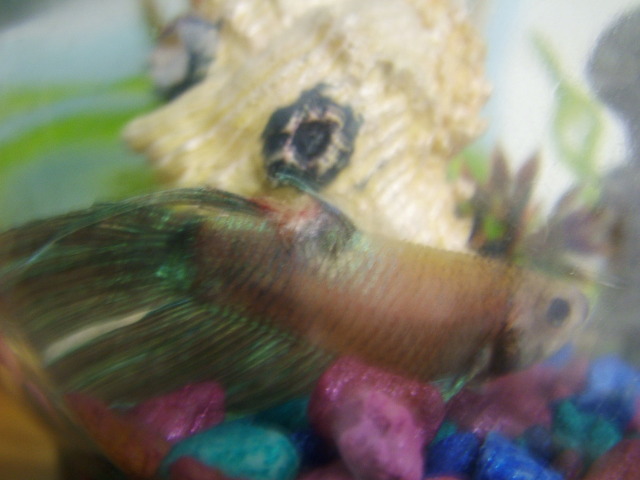 Betta Fish Illness
QuestionMy Betta
QUESTION: My betta has been sic
Betta Fish Illness
QuestionMy Betta
QUESTION: My betta has been sic
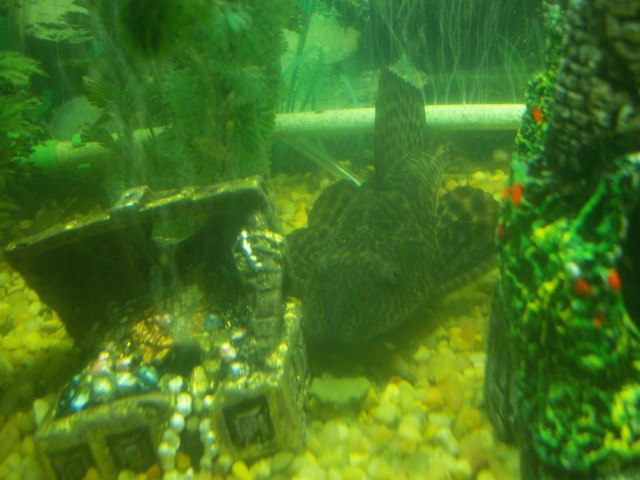 sick pleco please help
Questionsick pleco
QUESTION: Hello I have a 29ga
sick pleco please help
Questionsick pleco
QUESTION: Hello I have a 29ga
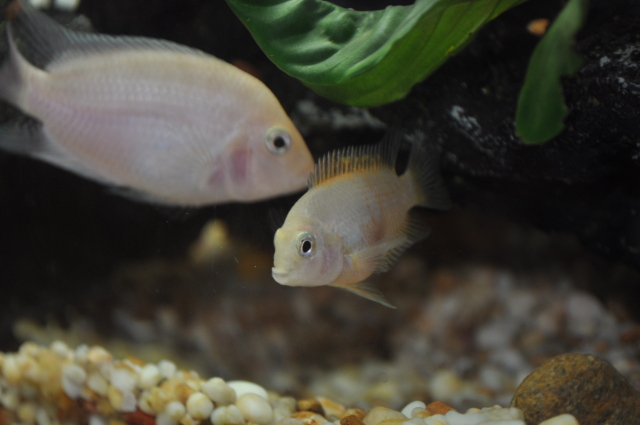 cichlids babies
Question
Cichlid Parents
Hello I am extremely excited a
cichlids babies
Question
Cichlid Parents
Hello I am extremely excited a
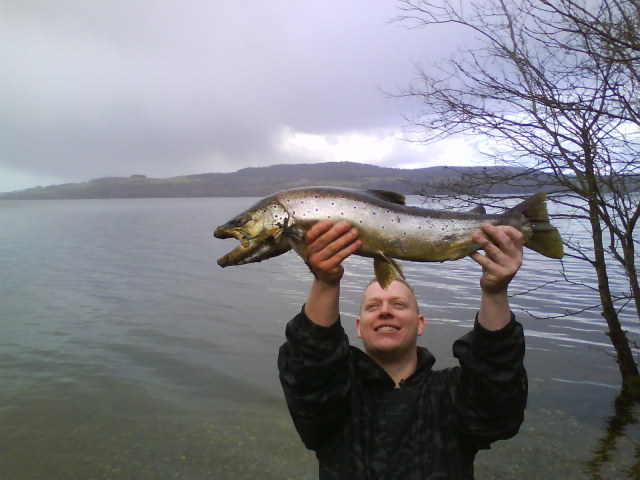 salmon or sea trout
Question
salmon or sea trout?
hi there
i caught this
salmon or sea trout
Question
salmon or sea trout?
hi there
i caught this
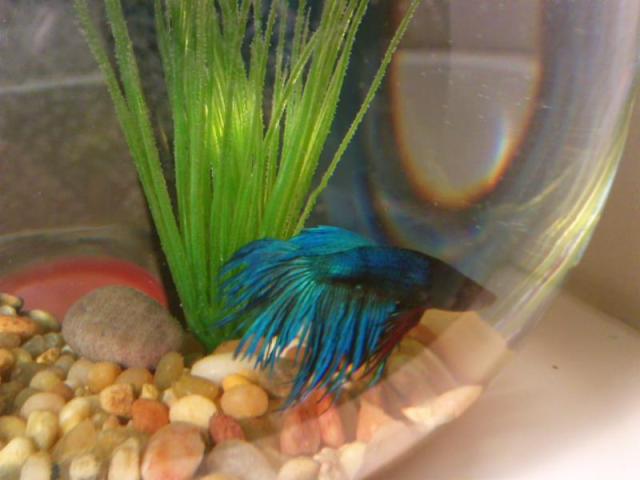 new betta fish with black dust spots
Question
ferdie
just brought home a new betta an
new betta fish with black dust spots
Question
ferdie
just brought home a new betta an